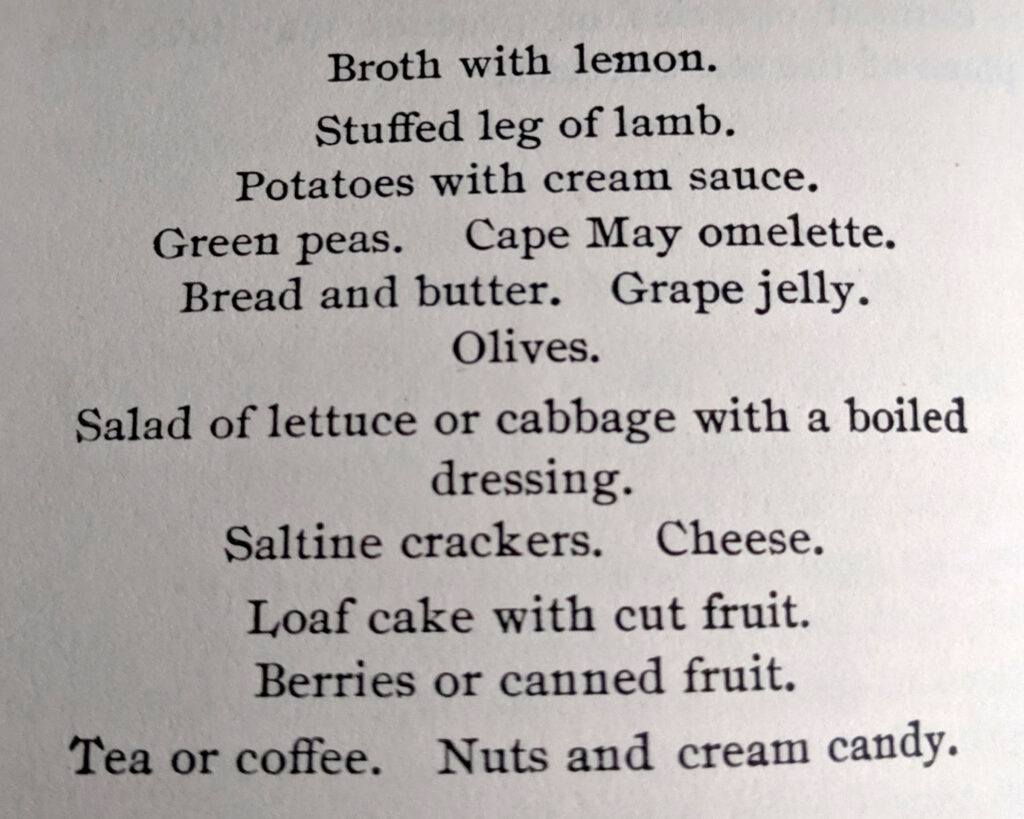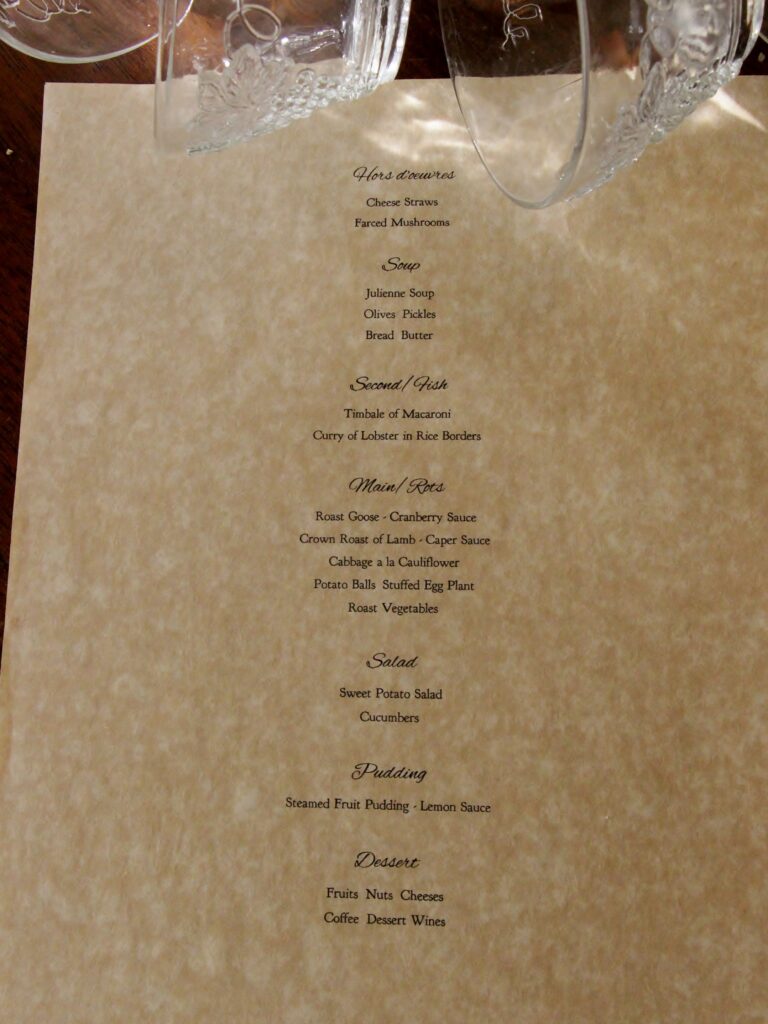So, time for me to rant a little on one of my pet peeves. That’s where someone puts a pork chop, mashed potatoes and green beans on a plate, and says “look, I made a three-course dinner!” And I then start channeling Inigo Montoya “You keep using that word. I do not think it means what you think it means.”
The number of courses has little to do with the number of dishes in a meal. The only limitation is that you really can’t have more courses than dishes. What defines a course is a grouping of things served together, generally with the dishes on the table being cleared between courses. General rules of thumb: If it’s all on one plate, it is of the same course. If they are things that go together, and are served at the same time, they are in the same course.
Today, most modern meals are two or three courses, pretty much maxing out at four, unless you are involved in very formal dining, or at a very high-end establishment. Those courses would be salad, soup, main, and dessert.
But in the past, the courses were more varied, and much more complex. A meal might involve any of these courses:
- Hors d’oeuvres – Not always counted as a course. Various small plate foods before the meal starts
- Soup – Including bread, butter, crackers, etc.
- Fish – Some type of seafood, with sauces and/or other accompaniments.
- Main – One or more “Made dishes” like savory pies, casseroles, pasta dishes, etc, with accompanying sauces, vegetables, etc.
- Roast – One or more Roasted meats of any type, beef, pork, poultry, etc, with accompanying sauces, vegetables, etc.
- Salad – One or more salads of nearly any type, plus bread, butter, etc.
- Pudding – What we today in America would call dessert. One or more cakes, pies, custards, trifles, etc.
- Dessert – One or more of: Fruits, cheeses, chocolates, nuts, sweetmeats, served with coffee and/or tea.
The above are the most common courses I found, in the order I found them most commonly served in the 19th century. Probably the most noticeable thing to an American was that the salad course was almost always served after the main courses.

The above menu is from Catering for Two1, 1898. Broken down, it consists of five courses:
- Soup – Broth with lemon.
- Roast – Stuffed leg of lamb, Potatoes with cream sauce, Green peas, Cape May Omelette, Bread and butter, Grape jelly, Olives.
- Salad – Salad of lettuce or cabbage with a boiled dressing.
- Pudding – Loaf cake with cut fruit, Berries or canned fruit.
- Dessert – Tea or coffee, Nuts and cream candy.
Needless to say, even with this only being a meal for two persons, it is quite complex, and involved significant effort and skill to get to the table. But at the same time, it is not exceptional for the period. In fact, for what we would consider upper-middle class, it would probably be pretty typical.
One must also keep in mind that meals involving more than five courses would probably only be common in wealthy households or for special occasions and holidays. Such meals would also be not be served rapidly. Time would be taken, with pauses between courses, and different wines and sometimes sherbets served between courses. A full seven course meal may take as much as three or more hours from start to finish.
And having actually once served a full seven-course, 19th Century meal, you really do need an actual kitchen staff, because in order for everything to be just right, they have to be finished just as they need to be served.

Above Menu:
- Hors d’oeuvres
Cheese Straws – Farced Mushrooms - Soup
Julienne Soup – Olives and Pickles – Bread and Butter - Second/Fish
Timbale of Macaroni – Curry Lobster in Rice Borders - Main/Roasts
Roast Goose with Cranberry Sauce – Crown Roast of Lamb with Caper Sauce – Cabbage a la Cauliflower – Potato Balls – Stuffed Eggplant – Roast Vegetables - Salad
Sweet Potato Salad – Cucumbers - Pudding
Steamed Fruit Pudding with Lemon Sauce - Dessert
Fruits – Nuts – Cheeses – Coffee – Dessert Wines
This was the menu from a New Year’s feast I put on for some friends, January of 2017. On that day, the Soup course was placed on the table at 1pm, and the Dessert course was placed at 4pm. Some day I may do one again, and do an article on it…
- (1)James, A. L. Catering for Two; Comfort and Economy for Small Households; G. P. Putnam’s Sons: New York and London, 1898.